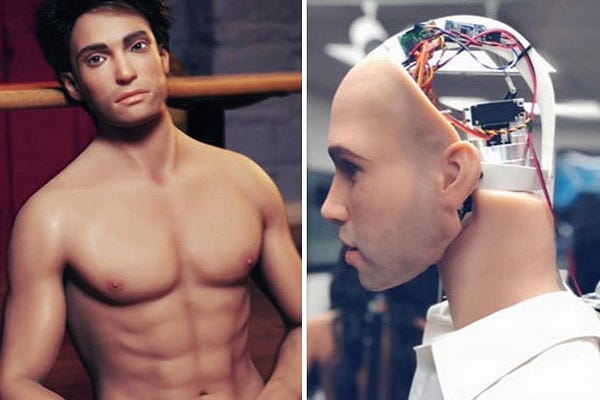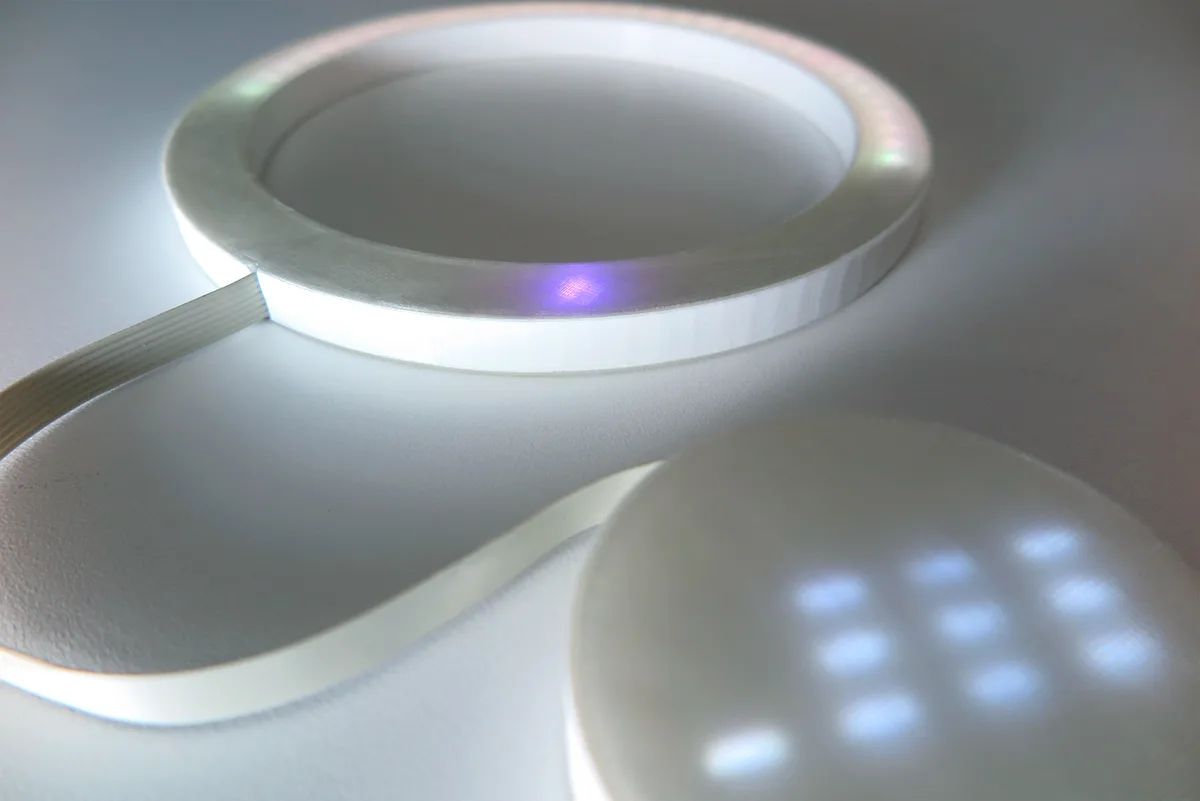Embracing The Power of a Modern Family
December 5, 2019Future of Work
December 10, 2019How technology changes our sexual behavior
A story by Luca Fischer
Sexual intercourse is basic human instinct. It’s the reason why we exist and how the human race keeps on growing. In a world where technology is visible and has penetrated in every facet of our lives, technology has also found its way into our intimate activities, changing our sexual behavior.
Technology as our next nature
Next Nature Network, a philosophical concept founded by philosopher, artist and scientist Koert van Mensvoort researches how technology is becoming our next nature. It is interesting where men and machine are literally fusing, addressing the growth of technologization of sexual behavior.

For that evolvement, Next Nature developed The Pyramid of Technology, visualizing how visionary technologies get welcomed by culture and society, and become a vital, eventually natured part of it. And the very bottom exist the visionary technologies that do not quite exist yet. They become a prototype, are then applied and put on the market, making them accessible. As they become more important within daily life, even crucial, they start fading as a technology, become more natured by humans. According to Mensvoort, WiFi could be one of the current technologies that is becoming our next nature: it’s becoming very hard to live without it, and society is expecting it to be ‘there’ at all times, like sewerage. It’s not even perceived as technology anymore. A sex toy such as a dildo or artificial vulva already are accepted and integrated by a big portion of society, placing them quite high on this visual pyramid. What about the sex robot? It’s not visionary anymore as they have been on the market for quite some years now. According to Niels van der Voort, founder of dutch lifestyle brand MotsuDolls, sex robots as we would see them in Science Fiction are not on the market yet, and won’t be for at least a couple of years. “The mechanisms a sex robot would need to move just like a human body can, are still too complicated to build. Not to mention, they are very, very heavy. For now, dolls equipped with an AI to have a little conversation with while doing the deed, is the most popular and accessible option.” (March 2019)
Against Sex Robots
Change, though, doesn’t come easily or without friction, and not everyone is thrilled to be set on a waiting list for a sex robot. Professor of Ethics and Culture of Robot and AI, Kathleen Richardson, professor at De Monfort University in Leicester, launched the campaign Against Sex Robots back in 2015. With the arrival of this robot, Richardson fears for female objectification, misogyne and lack of empathy towards one-another. A sex robot won’t tell you ‘no’, nor will it say it hurts, as you don’t need to take into account what it’s thinking or feeling. When we get used to engaging with robots in a certain way, it could affect our social behavior in a negative way, according to the founder of the campaign (Forbes, 2018). She also states that we are manifesting a culture where we’re being encouraged to form a relationship with a commercial good. “I’m anti-anything that turns human bodies into commercial objects for buying and selling’, Richardson says in a Tweet.
Not just for men

While the arguments of feminist-humanist Richardson warns us for the threats these robots could manifest, especially regarding females, women aren’t left behind in this emerging industry. One year ago, the first heterosexual female-orientated sex robot has been put on the market by Abyss Creations, also known as Realbotix. His name is Henry — yes, just like the vacuum cleaner with the face on it. Unlike the hoover, Henry has artificial stubble, an adjustable penis and Brad Pitt’s abs. He’s also able to recite your favorite poem and tell you a joke, which indicates an important difference between male and female-orientated robotics. Matt McMullen, CEO of the company who birthed Henry, states that he has had a lot more inquiries from women who desire a companion, not just something to get it on with (The Sun, 2019).
The age of virtual companions
The companionship aspect of robotics and virtual entities is a growing trend, according to trend forecaster David Mattin. Calling it the age of virtual companions, he states a change in the relationships we have with digital entities, emerging from basic assistants to companions, even friends. We’ve all been there: asking Siri or Alexa to tell you a joke, rather than dictating it to turn up the volume or switching off the lights. It’s not just pure purpose we desire from our home assistants. We also would like them to include human characteristics such as humor, which probably has to do with our anthropomorphism — to truly engage just like we would with a roommate or family member. According to Mattin, it is the first (very small) step towards bonding with our assisting AI. Mattin asks what Richardson states as destructive: what does it mean for our shared social life when we can create emotional bonds with an AI-system? It makes us think about what we really need to define a relationship. Can it be with a commercial good such as a sex toy, doll or robot? Or will it still need to be very much human? When and where questions to these answers become fluid and hybrid, we are entering a society in which polyamory takes a more significant place — loving more than one ‘person’ at the same time. For now, we have heaps of options to start our first companionship with our smartphones. An app such as Replika is there for you 24 hours a day when you’re feeling anxious, frisky or are desperate for a joke. Slowly, this growing desire to have a more intimate relationship with an AI-fueled device could lead to a mass adoption for a sex robot.
Other view point possible, even desirable
In her campaign, warning against this disruptive transformation of intimacy, Richardson’s point of departure and reference is what we can call the neurotypical mind — us the ‘normal’ ones. Richardson is leaving the atypical-minded untouched. For example mentally impaired people. Often at the sidelines of society, mentally impaired people — like the rest of society — have sexual desires, too. Because of their position and the fact that sexual intercourse and intimacy are hard to discuss, it is challenging for this group to deal with their sexual tensions, even more so when tools for them to experiment are currently seen as a taboo at healthcare institutions. To educate this group adequately on sexual behavior, lifestyle concept ‘Come and Play’ has been developed in August 2019. Research shows how institutionalized mentally impaired youth is curious to discover their sexual preferences — yet doesn’t have the knowledge nor the tools to start this journey in a way that suits them properly. The current sensual solutions contain informative books and pornography. While the latter is quite entertaining, educating a mentally impaired person through books is not going to let the knowledge stick in his or her mind: because of their low IQ, short attention span and childlike view, they are in need of a different approach to develop themselves intimately.

I
n collaboration with healthcare institution Elver and intimate lifestyle company MotsuGroup, suiting toolkits and an educational platform Learning by Doing have been developed to make their sexual journey fun, informative and autonomous. These toolkits contain various attributes like an artificial vagina or penis or even a full-size Real Doll, depending on the request of the client. With matching videos on the learning platform, he or she can learn while experimenting with the toys. Not only have these attributes made it possible for mentally impaired youth to (literally) sexually discharge, but are also forming a way of communication between client and coach of the institution. Clients are struggling, and vice versa: their supervisors often don’t know how to handle the situation, as its very personal and delicate to address. These toolkits, as well as the learning platform is realizing a physical instrument to communicate sexual needs.

To address a question that might pop-up in your head while reading this article: it is unsure whether an object like a doll or robot could serve as a therapeutic outlet for people that cope with a mental disorder such as pedophilia. Because of the high level of ethical difficulty addressing that specific subject, this concept doesn’t try to create a solution for this disorder, but rather wants to seek out to mentally impaired youth to offer a sensual solution for their ongoing sexual journey, and to tell them it’s OK to have these feelings. Currently, a pilot is being tested at a healthcare institution in The Netherlands in collaboration with lifestyle company MotsuGroup. While this lifestyle concept still contains a major human factor, it does show how technology, added to this basic and animal-like instinct, can improve the quality of life of an underrepresented group of people. In the future, an AI-fueled system like a doll or robot.
The future
When we look at speculative futures, technology and its influence are in all of them. The role of technology in the transformation of sexuality is still malleable. Of course, the subject provokes an endless philosophical and existential conversation about identity, the essence of human purpose and the definition of intimate relationships. It’s important to stay critical about a disruptive technology that touches our nature on a delicate spot. I’ll leave you with this question: What role do you think technology should play when it comes to intimacy, sex and love?
This is a story of the Futurist Club
By Science of the Time
Written by: Luca Fischer

Luca (22) recently graduated from Trend Research and Concept Creation in Lifestyle, where she wrote her thesis about intimacy among mentally impaired youth, and how technology can improve their quality of life by adding it to this basic human instinct. Her conceptual ideas and speculative future gaze is substantiated with a philosophical and ethical framework: “When looking at multiple futures, it’s not just about confirming a direction, but also about the provoking question — what it will mean for a culture, sector or lifestyle — and how ethically correct that future is going to be.” Currently, she works as a freelance allround creator and lives in Tilburg. A few of her former projects include a function as visual direction for start-up lifestyle brand PureSan, and a function as editor-in-chief of a local lifestyle magazine.



